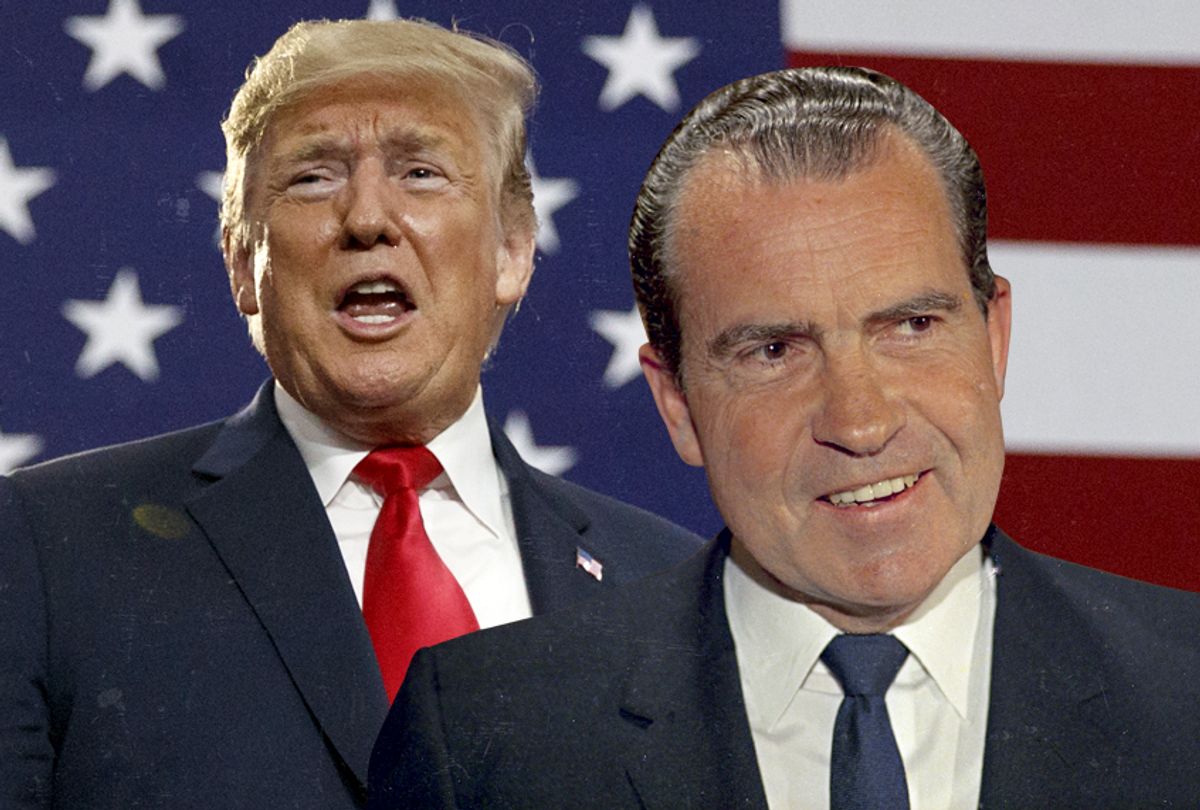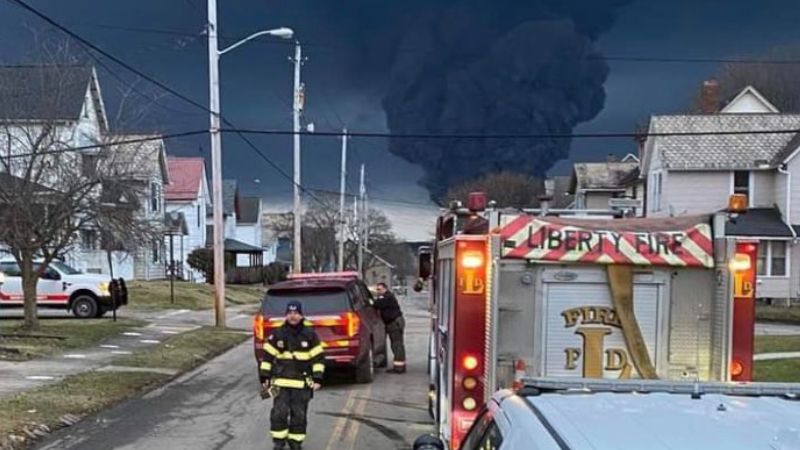U.S. Dollar's Troubled Start: Parallels To The Nixon Presidency

Table of Contents
The Nixon Shock and its Impact on the U.S. Dollar
The Nixon Shock, a series of economic measures implemented in 1971, profoundly altered the global monetary system and had a significant impact on the U.S. dollar's value.
Closing the Gold Window
Perhaps the most dramatic aspect of the Nixon Shock was the closure of the gold window in August 1971. This decision ended the Bretton Woods system, which had pegged the value of the U.S. dollar to gold since the end of World War II.
- Devaluation: The immediate consequence was a devaluation of the dollar, as it was no longer convertible to gold at a fixed rate.
- Increased Inflation: The move unleashed inflationary pressures globally, as countries were no longer constrained by the gold standard.
- Global Economic Uncertainty: The sudden shift created significant uncertainty in international currency markets, leading to volatility and speculation. The Nixon Shock fundamentally destabilized the global economic order, setting the stage for a period of high inflation and economic uncertainty. Keywords: Nixon Shock, Bretton Woods system, gold standard, devaluation, inflation.
Floating Exchange Rates
The abandonment of the gold standard led to the adoption of floating exchange rates. This meant that currency values were now determined by supply and demand in the foreign exchange market.
- Volatility: Floating exchange rates introduced greater volatility into currency markets, making it more difficult for businesses to plan for the future.
- Speculation: The increased volatility fueled speculation, as investors bet on the future value of different currencies.
- International Trade: Fluctuations in exchange rates impacted international trade, making exports and imports more unpredictable and potentially more expensive. Keywords: Floating exchange rates, currency volatility, speculation, international trade.
Current Economic Parallels to the Nixon Era
While separated by decades, there are intriguing parallels between the economic climate of the Nixon era and the present day. The U.S. dollar's troubled start in the 21st century shares several similarities with its struggles in the 1970s.
Inflationary Pressures
The U.S. is currently experiencing significant inflationary pressures, reminiscent of the inflationary spiral of the 1970s.
- Supply Chain Issues: Disruptions to global supply chains, exacerbated by the COVID-19 pandemic and geopolitical events, have contributed to rising prices.
- Energy Prices: Soaring energy prices, driven by geopolitical factors and increased demand, are another key driver of inflation. These factors have considerable overlap with the oil shocks of the 1970s.
- Monetary Policy: The Federal Reserve's response to inflation through interest rate hikes mirrors, to some extent, the monetary policies employed during the 1970s, though with different tools and approaches. Keywords: Inflation, supply chain, energy prices, interest rates, monetary policy.
Geopolitical Instability and its Effect on the Dollar
Geopolitical instability significantly impacts the value of the U.S. dollar, much as it did during the Nixon era.
- Global Conflicts: The ongoing war in Ukraine, and other regional conflicts, introduce uncertainty and volatility into global markets, impacting the dollar's value.
- Trade Wars: Trade disputes and protectionist policies create uncertainty and potentially disrupt international trade flows, affecting currency valuations.
- Sanctions: Sanctions imposed on various countries can also influence currency markets and the dollar's relative strength. The complex web of international relations bears striking resemblance to the geopolitical tensions that marked the Nixon era. Keywords: Geopolitical risk, global conflict, trade wars, sanctions, currency markets.
Debt Levels and National Finances
The high levels of national debt in the U.S. today echo concerns about fiscal stability that existed during the Nixon administration.
- Fiscal Policy: Government spending and budget deficits continue to be sources of debate and concern, raising questions about the long-term sustainability of the current fiscal trajectory.
- International Confidence: High national debt levels can erode international confidence in the U.S. economy, potentially weakening the dollar's value. This presents a similar challenge to that faced during Nixon's presidency. Keywords: National debt, fiscal policy, government spending, budget deficit.
Conclusion
The parallels between the U.S. dollar's troubled start in the current economic climate and the challenges faced during the Nixon presidency are striking. Both periods witnessed significant inflationary pressures, geopolitical instability, and concerns about the nation's fiscal health, all of which have a direct bearing on the value and stability of the U.S. dollar. Understanding these historical precedents is crucial for navigating the complexities of today's global economy.
Understanding the historical context of the U.S. dollar's troubled start, particularly the parallels to the Nixon era, is crucial for navigating the complexities of the current economic landscape. Stay informed and continue your research into the future of the U.S. dollar and the global economy.

Featured Posts
-
 Recent Developments In Us China Trade Relations Tariff Exemptions
Apr 28, 2025
Recent Developments In Us China Trade Relations Tariff Exemptions
Apr 28, 2025 -
 Red Sox Adjust Lineup Casas Lowered Outfielders Return Impacts Roster
Apr 28, 2025
Red Sox Adjust Lineup Casas Lowered Outfielders Return Impacts Roster
Apr 28, 2025 -
 Ohio Derailment The Extended Impact Of Lingering Toxic Chemicals On Buildings
Apr 28, 2025
Ohio Derailment The Extended Impact Of Lingering Toxic Chemicals On Buildings
Apr 28, 2025 -
 9 Revelations From Times Trump Interview Annexing Canada Xi Jinping And Presidential Term Limits
Apr 28, 2025
9 Revelations From Times Trump Interview Annexing Canada Xi Jinping And Presidential Term Limits
Apr 28, 2025 -
 Cassidy Hutchinson Jan 6 Hearing Testimony Detailed In Fall Memoir
Apr 28, 2025
Cassidy Hutchinson Jan 6 Hearing Testimony Detailed In Fall Memoir
Apr 28, 2025
Latest Posts
-
 Red Soxs Shifting Lineup Impact Of Outfielders Return And Casas Lowered Spot
Apr 28, 2025
Red Soxs Shifting Lineup Impact Of Outfielders Return And Casas Lowered Spot
Apr 28, 2025 -
 Analysis Red Sox Lineup Changes Following Outfielders Return And Casas Demotion
Apr 28, 2025
Analysis Red Sox Lineup Changes Following Outfielders Return And Casas Demotion
Apr 28, 2025 -
 Updated Red Sox Lineup Casas Position Change And Outfielders Reinstatement
Apr 28, 2025
Updated Red Sox Lineup Casas Position Change And Outfielders Reinstatement
Apr 28, 2025 -
 Red Sox Lineup Outfielder Returns Casas Moves Down In The Order
Apr 28, 2025
Red Sox Lineup Outfielder Returns Casas Moves Down In The Order
Apr 28, 2025 -
 Triston Casas Continued Slide Red Sox Lineup Adjustment And Outfielders Return
Apr 28, 2025
Triston Casas Continued Slide Red Sox Lineup Adjustment And Outfielders Return
Apr 28, 2025
